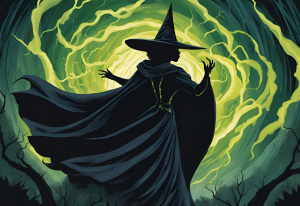A unique attraction known as the House of Privilege came to the Rollins campus this year. The House of Privilege was a chance for Rollins students to experience various forms of oppression that are present in our society. The “tour” of the house began with a wait, then a video decrying the influence of white superiority in our country.
After the wait the tour groups, composed of about 10- 12 students, headed into the different “rooms” in the house. The first room was the dining room. Three different families from different socioeconomic strata were displayed for the group to view; one rich, one middle-class and one poor. The actors attempted to convey these different strata with little success. The acting was so poor that the point they were trying to convey almost failed utterly. Then the group moved to the living room, where it saw a traditional Christmas holiday scene and members were asked to hang ornaments and state what they want for Christmas. This was the only part of the “tour” that was remotely believable. In the second living room, a family was celebrating the traditional Hindu holiday of Diwali. The portrayal of this “non-traditional” family was marred by the overwhelming whiteness of the actors. The different perspective on holidays would have been eye-opening for many of the students but the point was lost in the pitiful attempt to convey something in which the actors had no experience. After the living room, the tour proceeded to the bedroom. In one, a mother complains to her husband about their daughter dating and potentially marrying a black man. On the other side of the bedroom a closeted gay student talks to his sister about how great of a girlfriend he will one day have.
After his sister leaves, the gay student calls his boyfriend and complains that his family will never accept him. While I appreciate the sentiment behind the scene with the gay student, it is on the whole timid and stereotypical. For an attraction that is meant to enlighten and educate students, all I saw was every single stereotype for homosexuals, minorities, and upper-class households exemplified and presented to them. The tour continued to the meeting room where students were having a hall meeting with other students in their dorm. Different Rollins students showed pictures of their families and talked about the differences between them with regard to their ethnicities. This is the first time on the entire tour that I saw a student who was not white. However, once again the message of the students who spoke in this room was mild and unable to be received by the tour group because of its overwhelmingly weak nature.
The tour wrapped up with all of the students coming together to discuss their feelings about the experience in a focus group. The House was supposed to enlighten students about the different types of “privilege” that are present in our society. Every tour group had a moderately good discussion, but much of the discussion was forced and one-sided, with no one in the groups speaking against affirmative action and other reverse discrimination policies. The House was intended as a collaborative effort between the Office of Multicultural Affairs, the Office of Residential Life, and the Office of Community Engagement. All in all, the House of Privilege was a mediocre event that the Rollins campus should definitely consider redesigning in order to get the intended points across with more fervor and in a stronger manner.







Be First to Comment